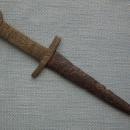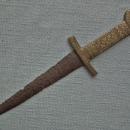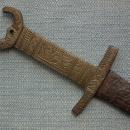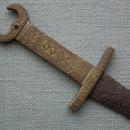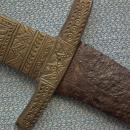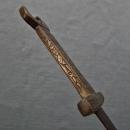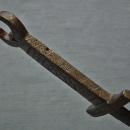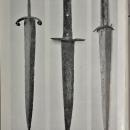Scarce Antique Islamic North African Berber Quillon Dagger With Crescent Pommel
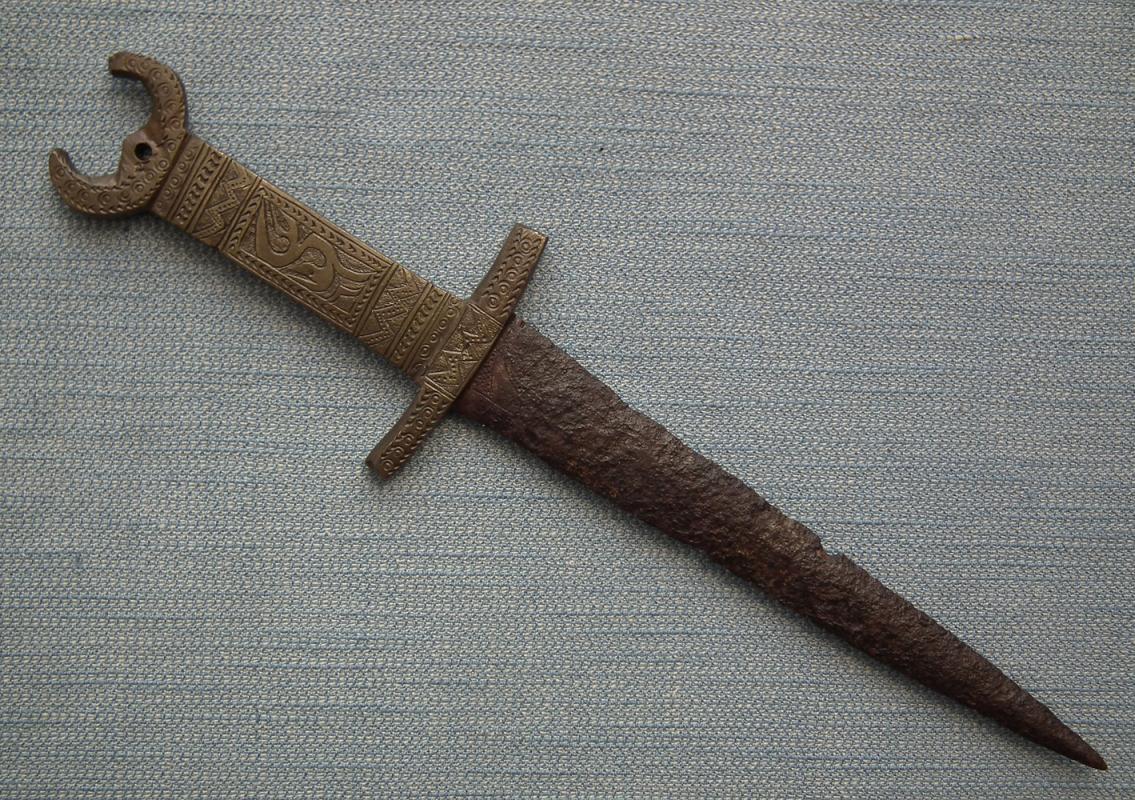







$1,500.00
Or Best OfferA scarce antique, Islamic, North African, early Berber dagger in the form of a 14th-century European medieval knight's quillon dagger with a crescent pommel.
The sword has a straight, double-edged blade that tapers to a point. The ricasso of the blade is decorated with an engraved ornament. The hilt is made of flattened bronze and has a sturdy cross-guard with a rectangular section. The cross-guard is incised in a geometrical pattern. The pommel is crescent-shaped and has a small hole for a suspension string in the middle.
The most known Berber daggers come from the 19th and 20th centuries. No early examples of Berber daggers are known, which is very strange since Berbers were known in antiquity to the Greeks and Romans as skillful warriors. Also, during the Muslim conquest of North Africa (Maghrib) 647–709 AD and for the conquest of Spain between 711–732 AD, the Arabs recruited Berber warriors because they knew them as perfect warriors well-armed with weapons, swords, and daggers.
Therefore, what happened to the earlier examples of Berber daggers? Perhaps, over the centuries of use, most of them were damaged and unsuitable for combat weapons, and metal was used as scrap metal for making other objects.
Since the dagger is made in the style of medieval knightly daggers, and the blade is in an excavated condition with a dark patina that appears on medieval swords and daggers, this dagger may be a medieval Berber dagger made in the style of the 14th-century European knightly dagger, known to the Berbers through the contact with European knights.
In my over 50 years of experience handling antique arms and armor, this is the first time I have seen this type of Berber dagger in museums, private collections, reference books, catalogs, or online sources.
REFERENCES:
A similar in form European medieval knight's quillon dagger with a crescent pommel, dated to the 14th - early 15th century, is published in the book "Daggers and Fighting Knives of the Western World: From the Stone Age till 1900" by Harold L. Peterson. Please see the last picture in the listing.
We will provide the buyer with a copy of the page from the mentioned reference, together with a certificate of authenticity.
CONDITION:
In original age-indicating condition, blade corroded but overall complete and sound, bronze hilt with dark patina.
As the photos were taken under studio lighting, the gilded bronze and blade appear darker and less glittery in natural daylight than in the pictures.
MEASUREMENTS: Overall length 29.5 cm (11.6 inches).
NOTE: The Berber tribes stretch from the Siwa Oasis in Egypt to the Atlantic Ocean. It is thought that they once inhabited the entire North African territory,
Several Berber dynasties emerged during the Middle Ages in the Maghreb and al-Andalus(الأندلس). The most notable are the Zirids( الزيريون )of Ifriqiya 973–1148), the Hammadids( الحمّاديون) of Western Ifriqiya, 1014–1152), the Almoravid dynasty ( المرابطون )Morocco and al-Andalus, 1040–1147), the Almohads (المُوَحِّدُون )Morocco and al-Andalus, 1147–1248), the Hafsids ( الحفصيون) Ifriqiya, 1229–1574, the Zayyanid (زيانيون,) Tlemcen, 1235–1556, the Marinids ( المرينيون )Morocco, 1248–1465, and the Waṭṭāsids ( الوطاسيون )Morocco, 1471–1554.
